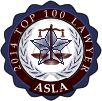Our law office does not accept nor handle cases which are exclusively under the Longshore and Harbor Workers’ Compensation Act. However, the Act does sometimes provide one of several remedies available in the maritime cases that we do handle. The general information provided here is for those who wish to obtain further information about such claims. This is a summary of Longshore Act provisions from a pamphlet issued by the U.S. Department of Labor, Employment Standards Administration, Office of Workers’ Compensation Programs (Revised August 1987). It may be out of date and/or contain other inaccuracies- so checking with a licensed attorney familiar with the Longshore and Harbor Workers’ Compensation Act is essential to get up-to-date and accurate information.
Purpose of the Longshore and Harbor Workers’ Compensation Act (33 USC 901 et. seq.):
This Act, administered by the Office of Workers’ Compensation Programs (OWCP) Employment Standards Administration, U.S. Department of Labor, offers compensation and medical care to employees disabled from injuries that occur on the navigable waters of the United States, or in adjoining areas customarily used in loading, unloading, repairing, or building a vessel. The Act also offers benefits to dependents if the injury causes the employee’s death. These benefits are paid by an insurance company or by an employer who is authorized by the OWCP to be self-insured. The term “injury” includes occupational disease arising out of employment.
The Act Covers:
EMPLOYERS who employ workers in a maritime occupation, either full or part-time, on the navigable waters of the United States or in an adjoining area customarily used by an employer in loading, unloading, repairing, or building a vessel.
EMPLOYEES in a maritime occupation – including a longshoreman or other person in longshoring operations, and any harbor worker, including a ship repairman, shipbuilder, and shipbreaker.
OTHER EMPLOYEES are covered similarly through the following Acts:
DEFENSE BASE ACT, applying to employment by Federal contractors outside the continental U.S., Alaska or Hawaii.
OUTER CONTINENTAL SHELF LANDS ACT, applying to employees of private industry, conducting certain operations on the Outer Continental Shelf of the United States.
NONAPPROPRIATED FUND INSTRUMENTALITIES ACT, applying to civilian employees of nonappropriated fund instrumentalities(post exchanges, etc.) of the Armed Forces.
EXCLUDED by the Longshore Act are the following individuals if covered by a state workers’ compensation law:
Individuals employed exclusively to perform office clerical, secretarial, security, or data processing work;
Individuals employed by a club, camp, recreational operation, restaurant, museum, or retail outlet;
Individuals employed by a marina and who are not engaged in construction, replacement, or expansion of such marina (except for routine maintenance);
Individuals who (A) are employed by suppliers, transporters, or vendors, (B) are temporarily doing business on the premises of a maritime employer, and (C) are not engaged in work normally performed by employees of that employer covered under this Act;
Aquaculture workers;
Individuals employed to build, repair, or dismantle any recreational vessel under sixty-five feet in length;
Small vessel workers if exempt by certification of the Secretary under certain conditions.
EXCLUDED also are:
A master or member of a crew of any vessel; or
Any person engaged by a master to load or unload or repair any small vessel under eighteen tons net.
Injury Benefits:
MEDICAL CARE – Includes all medical, surgical, and hospital treatment and other medical supplies and services required by the employment related injury.
The employee may obtain medical treatment from a physician of his or her choice, as designated by the OWCP. The term “physician” includes doctors of medicine (MD), surgeons, podiatrists, dentists, clinical psychologists, optometrists, and osteopathic practitioners within the scope of their practice as defined by State law. Chiropractors are also included to the extent that their treatment consists of manual manipulation of the spine to correct subluxation (dislocation).
An employee may not choose a physician who is currently not authorized by the Department of Labor to render medical care under the Act. The list of physicians not authorized is available from the local OWCP district office.
DISABILITY COMPENSATION –
Compensation is paid every two weeks during an employee’s total disability because of a work-related injury.
Compensation is paid at a lesser rate if the employee is only partially disabled for his regular work.
Disability means inability to earn the same wages earned at the time of injury. Compensation is payable for disabilities that are permanent total, temporary total, permanent partial, or temporary partial.
PERMANENT TOTAL AND TEMPORARY TOTAL DISABILITY – Compensation is two-thirds of the employee’s average weekly wage, subject to a maximum amount. The maximum rate payable for temporary total disability changes each October 1, based on the current national average weekly wage for the affected period. Compensation for permanent total disability is adjusted each October 1, based on the percentage change in the national average weekly wage from the previous year, subject to a maximum adjustment of 5%.
PERMANENT PARTIAL DISABILITY – Compensation is payable for the permanent loss or loss of use of certain members or functions of the body, such as the loss of the arm, hand, fingers, leg, foot, toes, hearing and vision. Compensation is payable for a certain number of weeks for each type of disability as specified in the Act. For example, total loss of use of a foot entitles the employee to 205 weeks of compensation.
TEMPORARY PARTIAL AND NONSCHEDULED PERMANENT PARTIAL DISABILITY – Compensation is two-thirds of the employee’s weekly wage loss or loss of wage-earning capacity.
REHABILITATION SERVICES – Medical rehabilitation may include exercise and muscle conditioning to help restore the employee to full usefulness.
Vocational rehabilitation may include evaluation, testing, counseling, selective placement, and retraining, if the employee is injured and cannot return to the former job. Rehabilitation services may include the cost of tuition, books and supplies, and provide a maintenance allowance during retraining.
Death Benefits:
DEATH BENEFITS are paid to a widow or widower or other eligible survivors if the injury causes the employee’s death. Reasonable funeral expenses are paid, up to a maximum of $3,000.00.
The widow or widower receives 50% of the average weekly wage of the deceased employee for life or until remarriage. Additional compensation is payable – 16-2/3% of the employee’s average weekly wage – for one or more children.
If children are the sole survivors, 50% of the employee’s average weekly wage is paid on behalf of the first child. Where more than one child is entitled to benefits, a maximum of 66-2/3% applies, shared equally.
OTHER ELIGIBLE SURVIVORS – parents, brothers, sisters, grandparents and grandchildren who were dependent on the employee.
Upon remarriage, a widow or widower receives a lump sum payment of compensation covering two years. Benefit payments to children, brothers, sisters, and grandchildren terminate when they reach 18, but may be extended to age 23 if the child or beneficiary is a student. Payments may continue indefinitely if a child remains incapable of self support due to a mental or physical disabilities.
The total amount of compensation may not exceed two-thirds of the employee’s wage. In computing death benefits, the average weekly wage of the deceased shall be considered to have been not less than the national average weekly wage effective at the time of the employee’s death. The total weekly benefits, however, may not exceed the average weekly wage of the deceased or 200% of the national average weekly wage, whichever is lesser.
Maximum and Minimum Payments:
DISABILITY – compensation payable under the Act may not exceed 200% of the national average weekly wage, applicable at the time of injury, or the employee’s full average weekly wage, whichever is less.
Waiting Period and Beginning of Compensation:
NO COMPENSATION – is allowed for the first three days of disability unless disability lasts longer than fourteen days. In such cases compensation is paid from the first day of wage loss. The first installment of compensation is due 14 days after the employee stops work, or as directed by the OWCP.
Claimant Assistance:
The OWCP will help claimants prepare claims, explain benefits and proceedings under the Act, and will advise about medical, manpower and vocational rehabilitation services.
District Offices in the OWCP are located in Boston, New York, Philadelphia, Baltimore, Norfolk, Jacksonville, New Orleans, Houston, Chicago, San Francisco, Long Beach, Seattle, and Honolulu. Office addresses can be supplied by the employer or the compensation insurance carrier.
What To Do If You Are Injured:
1. NOTIFY your employer immediately and ask for a Form LS-1, which authorizes treatment by a doctor of your choice.
2. OBTAIN medical treatment as soon as possible.
3. GIVE written notice of your injury within 30 days to your employer on Form LS-201. Notice of death must also be given within 30 days. Additional time is provided for certain hearing loss and occupational disease claims. Contact your nearest OWCP district office for additional information regarding these types of claims.
4. FILE a written claim for compensation within one year after injury if full compensation and medical care have not been provided. A claim must also be filed within one year after death. The time for filing claims in certain occupational disease cases has been extended to two years.
If you need additional information about your rights under this law, contact an office listed in the telephone directory under the U.S. Department of Labor, Office of Workers’ Compensation Programs.
For further information, please contact:
U.S. Department of Labor
Employment Standards Administration
Office of Workers’ Compensation Programs
Washington, D.C. 20210









